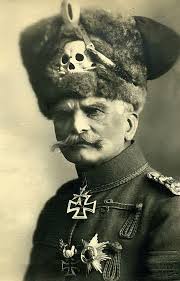Nationalism and monarchism in the shapes of Garibaldi and King Victor Emmanuel II at last succeeded together in the wars for Italian Independence between the 1840s and 1860s. Finally, when France relinquished control of the southern Papal states to Italy, during its own disastrous war with Prussia in 1870, the united Italy, roughly as shown in the map, was complete. Italy signed the Triple Alliance pact with Austria-Hungary and Germany in 1882, in which each party undertook to support any partner attacked by France or Russia. Significantly, Italy insisted on a clause that would allow her to refrain from any conflict involving Britain.
Small wonder, then, that Italy felt ambivalence about observing the Triple Alliance commitment when the central powers declared against Russia, and then France and Britain in 1914. Although a distinctive peninsula, the young Italy had uneasy border relationships to the north. To the east and north east lay the Adriatic sea as a short separator from the volatile Balkans; to the north west lay France, and due north the once mighty Habsburg empire, now the ailing but belligerent Austria-Hungary.
Relationships were tense following the outbreak of war. Not only was Italy unwilling to declare for the Central Powers against Britain, she argued - with justification - that Austria had repudiated the terms of the Triple Alliance by a unilateral invasion of Serbia, and by the terms of that agreement she was owed compensation of other Balkan land.
Two powerful politicians at the top of Italian government were at odds, and by early 1915 a policy stalemate prevailed. Giorgio Sonnino, the Foreign Minister, was strongly pro-war (initially on the side of the German alliance), whereas Giovanni Giolitti, former Premier and current leader of opposition, was an ardent neutralist, who preferred to negotiate with Germany and Austria for concessions. Germany was the keener of the two powers to do this, and pushed Austria hard for concessions. However, Italy had one eye on the early developments in the Gallipoli campaign, and could see opportunities for territorial gains from north to south Adriatic coast if she sided with successful allies. While Germany pressured Austria, in late April and in secret, Sonnino U-turned and signed the Treaty of London with Britain, France and Russia, which promised even greater gains than Germany was proposing. Sonnino denounced the Central Powers publicly on 3rd May, but then came a fight back by Giolitti, who persuaded parliament (unaware of the Treaty of London) to accept the current Austrian concessions. Despite this, the final balance was tipped by public opinion, swayed by its inchoate aversion to and distrust of Austria; and inflamed by the recent callous sinking of the Lusitania. Italy mobilised on the 22nd May, and declared war on Austria on 23rd. Declaration against Germany and Turkey came significantly later.
Although perhaps setting out with a cynically opportunist approach to joining the war, Italy could hardly be said to be joining the winning side at this point. Mackensen was driving the Russians and all before him on the Eastern Front; Ypres 2 had just occurred and the Champagne and Artois campaigns were going badly in the west; and the allies were in deep trouble at Gallipoli.
 |
| Field Marshall Luigi Cadorna 1850-1928 |




